#sam alden
Text
episode promo art by sam alden my beloved



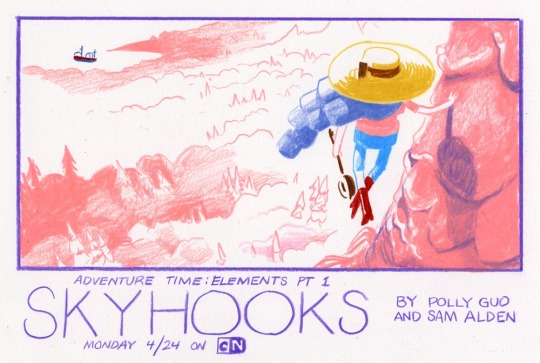
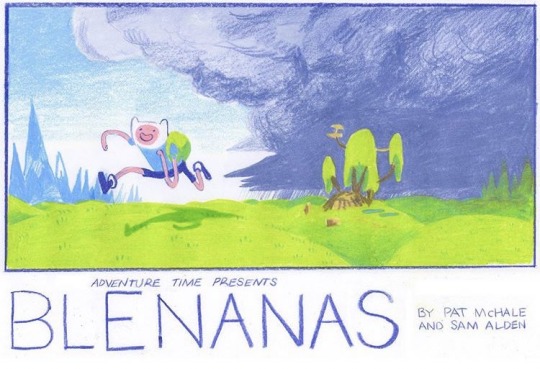


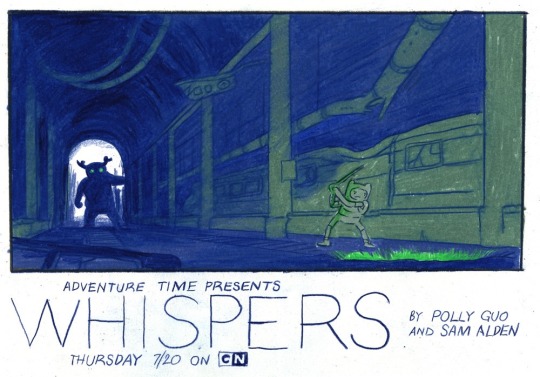
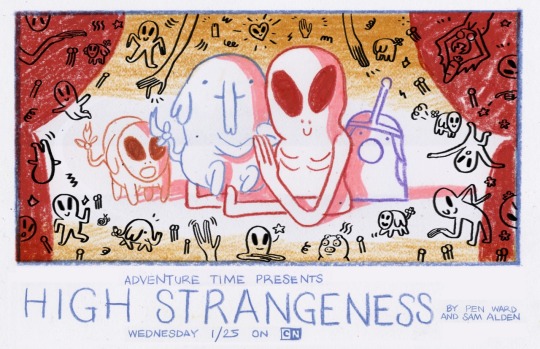

#adventure time#sam alden#promo art#finn the human#marceline#these are just a few there are a lot more#come along with me#CAWM#min & marty#high strangeness#flute spell#skyhooks#stakes miniseries#whispers#blenanas#the wild hunt#flute spell is my favorite btw#finntress#the invitation#at
4K notes
·
View notes
Photo
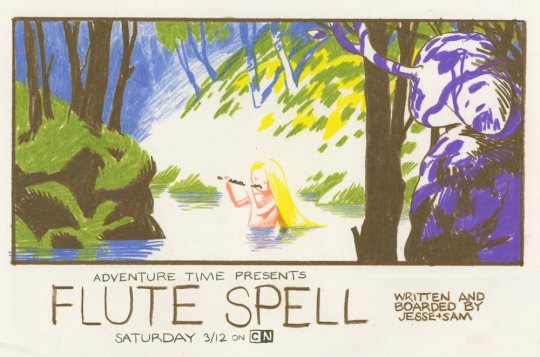

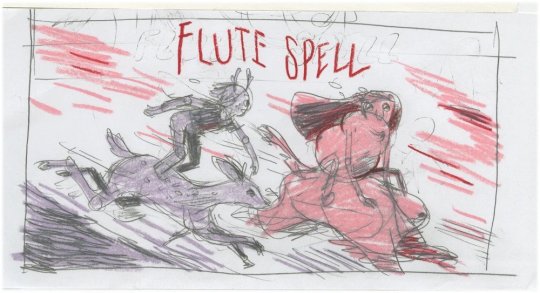


Flute Spell | season 7 episode 24 | storyboards by Jesse Moynihan & Sam Alden
#Adventure Time#storyboards#0724#Flute Spell#jesse moynihan#Sam Alden#Finn the Human#huntress wizard
86 notes
·
View notes
Text
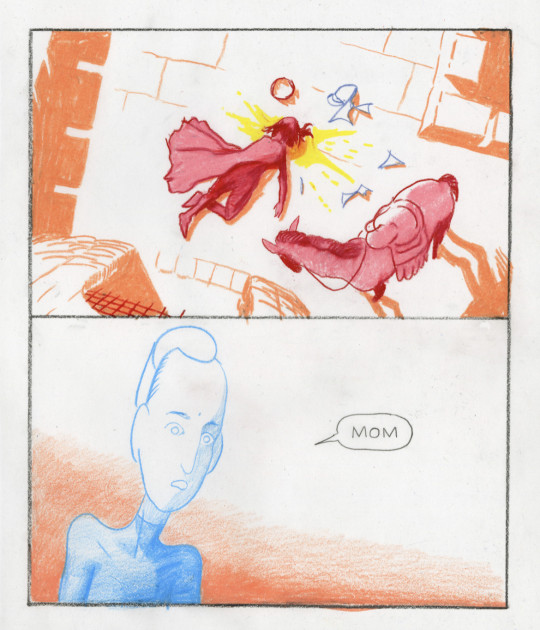
Sam Alden, Sledgehammer, 2022 - Available here.
16 notes
·
View notes
Text
THREE UNCIVILIZED BOOKS
If you ever come to visit me in Philadelphia, particularly if you are a visual artist of some stripe, odds are good I will invite you to visit the Barnes Foundation, home of some very beautiful paintings. A few months ago, I was with a cartoonist, looking at a piece by Pascin, maybe overhearing a docent providing commentary to a tour group, when the idiotic commentary of my own mind said to myself: Hey, didn’t a cartoonist do a cartoon biography of Pascin? Maybe there are copies in the gift shop. There were not, but once I was at home and googled I confirmed the cartoonist in question was Joann Sfar, and this book was published in the U.S. by Uncivilized Books. Months later, the publisher had a big sale on their website, and now that book is in my hands.
The comics biography is a much-maligned genre, for an number of reasons. One particularly egregious offense is telling the story of an artist via a style that gives no indication the storyteller cares about or understands the artist’s work. This, however, is a gorgeously drawn book. The affinity between Sfar feels for Pascin is clear, though pastiche is not attempted, there is still an understanding of the role of brushstroke, and characters struggle with the questions of art in a way that remains unsettled for the cartoonist. There’s a bit late in the book where two painters are discussing drawing from models, and how the goal is to capture the life and motion of a figure so it’s not like a photograph, and has a richness to it, but not to approach this goal the way the cubists go about it. It feels like this is a part of Sfar’s concerns as well, and he is choosing the looseness of a sketchbook approach, with varying materials, as his own way of achieving this aim. The page layouts are sketchbook-style, lacking the sense of forward momentum you get from a grid, but remaining well-timed in their progression across a sequence. To the best of my knowledge, it’s the only book of Sfar’s in English that’s in black and white, and we get to see his decisions unencumbered by color, as he focuses on textures, the body, nudity, eroticism.

The traditional structure of the biography is dispensed with, in favor of telling little stories that work as comics. There isn’t a narrative of cause and effect, of rising and falling fortunes. Rather, a man is who he is, throughout his entire life, and different scenarios illuminate what that means. Sfar really focuses on Pascin as a dude who is either having sex or is drawing women as a way of gratifying himself as an alternative to fucking. In doing so, he turns Pascin into a character, rather than a node in historical time. I am unsure if I favor this approach because I’m a fatalist about human nature and don’t think people change that much over a lifetime, or if I just think that’s what works for comedy and I prefer comedy to drama. Most likely these things are interconnected.
This seems to me the right approach for Pascin, both because a comic works well with cartoon characters as its subject, and because of what it is to be a painter. It has occurred to me, walking through the Barnes, or other museums, that if you are seeing actual paintings, you are seeing them absent a grand historical narrative. An art book, filled with reproductions, can break an oeuvre down into periods, showing examples of each. But in a museum, you take what’s on offer, whether it be sketches or a handful of finished works. It is the rare museum that features enough of an artist’s work a viewer can take in the grand sweep of a career. This offers its own correspondence to what it is to be a person: how a lover has a different perspective on their partner than a close friend would, and parents, coworkers, and casual acquaintances have their own individual takes. While a biographer might seek a full compendium of everyone’s shifting opinions, over a period of years, all this will lead a reader to is the inconclusive conclusion that such-and-such was “a complicated guy.” A portrait of the artist as someone primarily interested in women and their work might not satisfy a biographer, but it is not necessarily inaccurate.

Other artists (Soutine, Hemingway) get walk-on roles and they’re all presented as coherent characters - possessing a degree of psychological depth, but defined by their actions, and usually driven by base desires. Juxtaposing them against each other allows for themes to emerge without the book needing to lapse into narrative captions offering didactic explanations. There’s an episodic structure, and I enjoyed it from the beginning, but with each new chapter I felt like the book was getting better, cutting closer to its subject. It’s a very satisfying reading experience, and made me interested in reading more of Sfar’s work.
Another book I purchased from Uncivilized during this recent sale was Jesse McManus’ The Whistling Factory. Jesse recently gave a talk for the New York Comics Symposium I appreciated for a number of reasons. He is about the same age as I am, and he touched on having read as a kid some of the same black and white kids comics I wrote about in my article for issue 2 of But Is It… Comic Aht. (I still have copies available, if anyone’s interested.) While writing that piece, I had noted that there were similarities between how Jesse approached the cartooned shape and the shadows it cast and Scott Roberts did in his comic Patty Cake. My whole reason for writing that piece was that I feel like these comics were really under-discussed, because despite the nostalgic tendency in comics criticism, that primarily benefits superhero comics, and the comics I was talking about were never that widely-read. Jesse was totally disinterested in superhero comics that get discussed ad nauseam, and his perspective both feels unique to him and familiar to me.

Jesse McManus diverges from me by being very good at drawing, and he goes beyond a lot of people by making a system out of following the logic of squash-and-stretch, taking the Fort Thunder tendency to focus on characters moving in space and applying it to this Kricfalusi-derived shifting of forms. The interest in images-for-their-own-sake abuts an interest in language-for-its-own-sake, and they work in concert to create something just a few feet beyond the fathomable. So many comics are interesting because you can see the artist thinking on paper, but in McManus you see someone who’s been drawing so long that the brain is on paper so fully it feels like the unconscious mind is behind what we’re seeing. Objects seem to flow in and out of being symbols, with new meanings dependent on the context. If Uncivilized feels like a weird publisher because it’s not clear what exactly they publish, besides feeling like the farm league for D+Q, these books seem to take the name of the company literally, in very different ways, to put to paper things that feel half-feral, untamed.
The subject matter of the half-feral arises in Sam Alden’s New Construction, but in order to talk about what makes Alden’s comics interesting to me, I’ve gotta briefly digress: Recently I reread the first two issues of Adrian Tomine’s Optic Nerve, which Drawn And Quarterly published in 1995. In high school, I borrowed a friend’s copy of Sleepwalk, which collected the first four issues of the series, and enjoyed it, vaguely intending to buy my own copy of the collection eventually, and buying all the issues that would later be collected as Summer Blonde. Now I’ve got the first two issues, and I might as well try to find issues 3 and 4 so I can have a complete set of the series in single issue format.
By and large, when I read comics from the 1990s for the first time decades later, there are two reactions I have: “Wow, they don’t make comics like that any more. That was so good, and so strong, in a way I can’t imagine anyone attempting that now” - these are, generally speaking, works that are “edgy” or transgressive in some way: Seven Miles A Second, for instance, or Nurture The Devil (still trying to track down issue 2 of this) or Villa Of The Mysteries. Julie Doucet’s Dirty Plotte fits this bill. Paul Pope was likely not trying to be transgressive, but his P-City Parade is still impressive for how much of a game-changer its approach to visual storytelling would’ve been at the time, and has stuff in it any editorial or self-censoring impulse would blanch at today. In comparison, work that feels inoffensive often feels sort of boring in a way it likely didn’t at the time: The comics of Michael Dougan, say, which I tracked down after he died, are well-told, but also seem like they benefitted from there not being as much competition at the time. Interestingly, this perspective feels like the opposite of what most people mean when they say work “didn’t age well.” I am not sure if my tastes reflect a hunger for the transgressive for its own sake as much as I am interested in how work reflects the time of its creation, and I remember the nineties well enough to know people were not so well-manicured in their self-presentation as they are in the time of social media. (Again, these things are likely interconnected.)
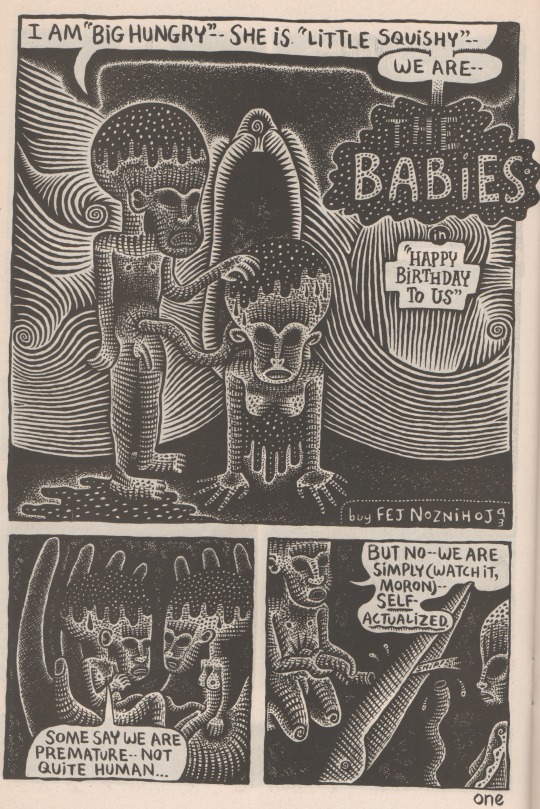

When I read Optic Nerve, it strikes me as work I liked when I was younger, that was made by someone who was themselves quite young at the time of its creation. One thing that makes the single issues interesting is the letter columns. Tomine was known for having good ones, as his work attracted a special type of weirdo that was comfortable offering their unprompted criticism to strangers. This is another aspect of the nineties which has fallen out of favor: All the criticism seems offered in earnest good faith, as opposed to today, where if someone tags a creator on social media when they’re offering criticism they will be called out for being a dick, people largely thinking of audience feedback within terms of a praise or trolling binary. James Kochalka has a letter in issue two, offering a take on Tomine’s work which has aged like wine, and I will reproduce it in in full:
…I’ve been enjoying your comics, but I’m beginning to find the critics tiresome. To me, it seems like you’re not particularly wise beyond your years. Your comics seem very much like they were written by a young person. You don’t seem particularly extra knowledgeable about what makes human beings tick… To me it seems like you’re as good you are simply because you work very hard at it. Sometimes it almost seems like you’re trying too hard, especially in Optic Nerve #1. It’s drawn with such rigidity. The pictures seem like they’re made almost entirely of vertical lines, with minor horizonals and very inconsequential diagonals and curves. To me it seems like the stories don’t automatically call to be treated in this manner. Rather, it seems like your desire to appear “professional” is having a restricting effect on your drawing hand. Please, flow freely into your work.
Tom Kaczynski, the future publisher of Uncivilized Books, also writes in, saying “…I did find this issue to be bit awkward in execution. Some panels, it seemed, you were unsure of. I don’t know what is causing it. In the past, you seemed to have certain confidence in the line of the brush (especially on the “Smoke” story) which seems to be repressed under the tightened inks.”
I bring up these things to note that Sam Alden, similarly, was perceived as a young cartoonist for a minute there, and his stories in New Construction seem very well-observed in capturing young adults and subculture. He would’ve been a bit older than Tomine was. (These letters were written in 1995, when Tomine would’ve been 21, the stories in New Construction would’ve been made, I think, when Alden was in his late twenties.) Tomine’s work is about young people as somewhat repressed, lonely, aching to find their place in the world. Alden’s characters, a little bit older, have found comfort in subculture but are not necessarily great at navigating the world they’ve chosen for themselves, which might be harmful to them. Contained in the contrast between the two is a Generation X-er’s ability to enter into the world of professionalism, albeit with trepidation, as Tomine himself approximates the literary short story, and gets gigs doing illustration for The New Yorker, while Alden documents the sort of extended adolescence millennials fell into in the absence of other options.

Sam Alden is by no means unemployable: He worked on Adventure Time at the time he made New Construction, and his earlier comic Haunter is the sort of post-Fort-Thunder genre comic that might earn someone such a gig. The two stories in New Construction, on the other hand, are literary fiction: One, Backyard, follows a group of young people living together in a house in New Orleans, where one person has stopped speaking altogether, and now communicates only in barks, and has moved to the backyard. Everyone is accepting this in the manner of open-minded young people, doing the best they can, noting she seems a lot happier now. The other story follows two siblings, also living in New Orleans, who have gone through a traumatic with their parent in the past and are ill-equipped for the larger world, and are having an incestuous relationship. They are much looser in their visual approach than you see in a Tomine comic, with scanning and printing technology developing enough in the intervening decades that Alden can work directly in pencil. He really nails the texture of water at night. The elliptical quality to his comics seems oriented towards the visual, towards capturing a gesture or atmosphere, something that might be elusive if attempting to recall it later, making for comics that feel decidedly immediate. Alden self-released a book called Sledgehammer digitally at the end of 2022, and my distaste for paying for digital comics has prevented me from reading it. I should get over this. It’s probably pretty good.
We all need to find a way to negotiate the digital space. It’s funny that Uncivilized proprietor Tom K, as he is known in shorthand, shares a surname with the Unabomber. It’s less funny that the company’s website does not offer anything in the way of interior art previews to show what these comics look like, which is almost certainly a big part of why I didn’t read them until they were deeply discounted. Images are from Uncivilized Books included in this post partly to remedy this problem, although they of course have far more comics that I have not read and have no idea what their art looks like. The images from mid-nineties comics I highlighted are included as part of my general largesse.
15 notes
·
View notes
Text
https://www.samalden.info/sledgehammer
my most favourite oneshot comic is back ( · ❛ ֊ ❛)
go read it if you want to be sad asf
2 notes
·
View notes
Photo

I am drowning
There is no sign of land
You are coming down with me
Hand in unlovable hand
Art by Sam Alden
4 notes
·
View notes
Note
He kinda looks like the guy from Lurking for Love
:3

ok but seriously,, he was heavily inspired by jacob haha 😭 i actually got into redacted by introducing a friend to lurking for love; dude the moment she saw jacob she freaked tf out then introduced me to sam, saying the reason she freaked out was because of how similar jacob was to sam, and how a lot of people depict him to look like jacob.
so i guess im just continuing the tradition 😭😭😭
ft. drawing i made while trying to say HEY THEYRE DIFFERENT GUYS to my friends


#asks#redacted sam#jacob alden#sam collins#lurking for love#redacted audio#BUT THEYRE LITERALLY COUSINS#blond man in flannel with stubble and glasses and southern accent#i do not have a type i swear.#but yeah i feel like the more i draw sam and the more i immerse myself in redacted the more he will deviate from jacob#i might just make a ref sheet for myself 😭#my art
79 notes
·
View notes
Text
The Holiday Bingo Card is Complete!!!!
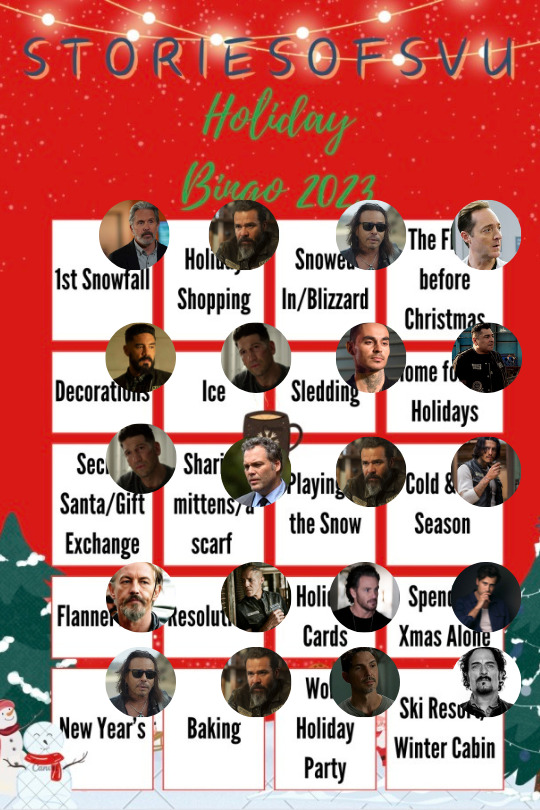
Here is what we have coming up!
26th Nov: Saint Michael - Frank Castle x Reader - Frank returns something important to you - BINGO SQUARE: GIFT EXCHANGE
1st Dec: Montana - Cowboy!Terry Bruno x Reader - Terry doesn't expect to receieve a holiday card from you. BINGO SQUARE: HOLIDAY CARDS
2nd Dec: Better - Bobby Goren x Reader - You're trapped in a car with a broken heater in the middle of winter. BINGO SQUARE: SHARING A SCARF
3rd Dec: Look After You - Johnny 'Coco' Cruz x Reader - Coco takes care of you when your struck down with a cold. BINGO SQUARE: COLD/FLU SEASON
8th Dec: Black Satin (NSFW) - Bishop Losa x Reader - Bishop finds a surprise when he's helping you with the holiday gifts. BINGO SQUARE: HOLIDAY SHOPPING
10th Dec: Home Alone (NSFW) - Priest!Joe x Reader - Joe doesn't expect a guest this Christmas. BINGO SQUARE: SPENDING CHRISTMAS ALONE
11th Dec: Candy Cane - Chibs x Reader - You turn out to be a distraction whilst gift wrapping. BINGO SQUARE: FLANNEL PJS
13th Dec: Heaven in Hiding - Mike Duarte x Reader - You find Mike hiding out during the holiday party. BINGO SQUARE: WORK HOLIDAY PARTY
15th Dec: End of the Line - Hank Loza x Reader - You and Hank make a realisation about your relationship. BINGO SQUARE: HOME FOR CHRISTMAS
16th Dec: Gingerbread - Bishop Losa x Reader - Bishop comforts you when you discover your limitations. BINGO SQUARE: BAKING
19th Dec: Snow - Bishop Losa x Reader - Bishop asks you a question that's been on his mind recently. BINGO SQUARE: PLAYING IN THE SNOW
20th Dec: The Fight Before Christmas - Sam Abrams x Reader - Sam and get into a fight after he discovers you've been keeping a secret from him. BINGO SQUARE: THE FIGHT BEFORE CHRISTMAS
23rd Dec: Traditions - Angel Reyes x Reader - Angel goes overboard on Valeria's first Christmas. BINGO SQUARE: DECORATIONS
24th Dec: Special Delivery - Tig Trager x Reader - Tig's babymoon doesn't go as planned. BINGO SQUARE: WINTER CABIN
26th Dec: Hot Chocolate - Alden Parker x Reader - Alden and you discuss what happened a few nights ago. BINGO SQUARE: FIRST SNOW
27th Dec: This is the Year - Juan 'Juice' Ortiz x Reader - Juice takes his new years resolution very seriously. BINGO SQUARE: RESOLUTION
28th Dec: LakeTahoe!Series Part One: Black Bear Lodge - Manny x Reader - You meet Manny in a lodge in Lake Tahoe. - Companion piece to End of the Line. BINGO SQUARE: SLEDDING
31st Dec: Fireworks - Taza Romero x OC: Ben Harrison - Taza discovers why Ben hates New Year's. BINGO SQUARE: NEW YEARS
2nd Jan: BlackIce!Series Part One: Black Ice - Frank Castle x Reader - Frank returns home after hearing about your accident. BINGO SQUARE: ICE
7th Jan: Mount Shasta (NSFW) - Taza Romero x OC: Ben Harrison - Ben surprises Taza with a trip away. BINGO SQUARE: BLIZZARD/SNOWED IN
#taza romero#Manny x reader#frank castle x reader#juice ortiz x reader#alden parker x reader#tig trager x reader#chibs telford x reader#mike duarte x reader#joe velasco x reader#terry bruno x reader#bishop losa x reader#angel reyes x reader#sam abrams x reader#hank loza x reader#bobby goren x reader#coco cruz x reader
33 notes
·
View notes
Text
I'm excited for NCIS: Origins. Mike Frank Alive and Probie Gibbs. I wish they introduce Ducky down the road too.
NCIS introduced different potential spinoff:
- LA 14x 17 one of my favourites. I like episodes with cold cases allowing you to go back on different times in the same show.
- I didn't like knight father. He can retire but it'll be a new Place rarely showed and new concept.
- I miss the early seasons of LA where the norm were going undercover to solve cases. Elite can be a mix of that and different natural of cases.
#ncis hawaii#ncis#ncis los angeles#ncis la#jess knight#sam hanna#jane tennant#g callen#jimmy palmer#alden parker#leon vance#nick torres#tim mcgee#kate whistler#kai holman#jesse boone#ducky mallard#hetty lange#kensi blye#marty deeks#lucy tara
8 notes
·
View notes
Text
NCIS/NCIS Hawai’i Drop Countdown!!!
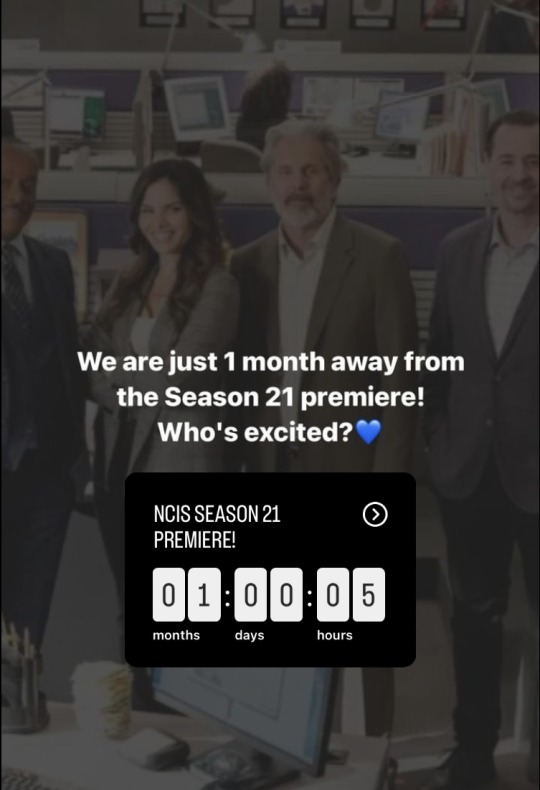
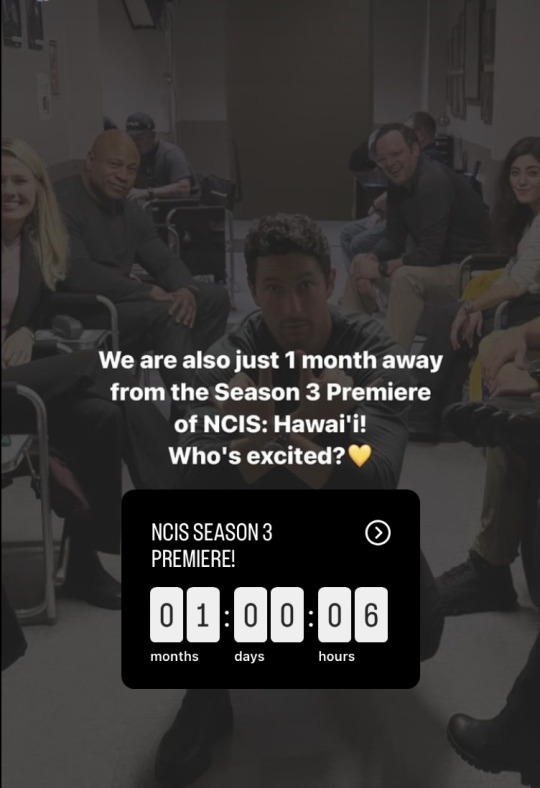
One month people one month!!!!!🎉
#I think I need to lay down and not get up for a month#1 month and 5/6 hours!!#i literally cannot#ncisverse#ncisverse cast#ncis#ncis hawaii#tim mcgee#alden parker#leon vance#jessica knight#lucy tara#kate whistler#jesse boone#sam hanna#credit to the person who made this
9 notes
·
View notes
Video
The NCIS Teams have a rocky start to team work (20x10)
#NCIS#NCIS Los Angeles#NCIS LA#NCIS Hawaii#video#Crossover#Alden Parker#Tim McGee#Nick Torres#Jessica Knight#Jane Tennant#Jesse Boone#G Callen#Sam Hanna#My Videos
45 notes
·
View notes
Text
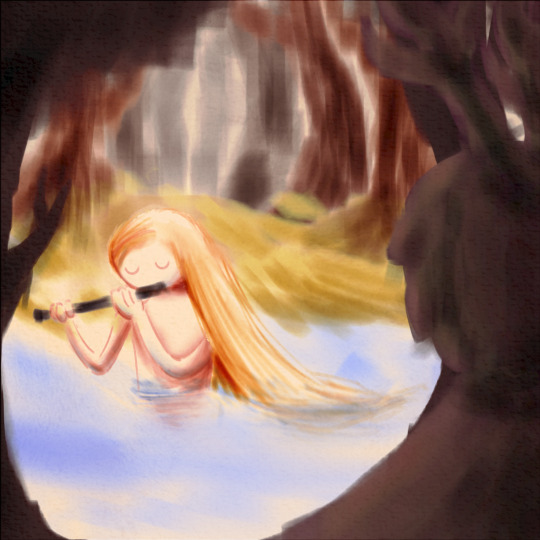
Season 7 Episode 25 Flute Spell - 224
#Basically just a redraw of the promo art for this ep by Sam Alden because I like it lol#adventure time rewatch and sketch#adventure time#finn mertens#finn the human#huntress wizard#flute spell#My art
98 notes
·
View notes
Text
i love a male actor with zero social media presence
26 notes
·
View notes
Text
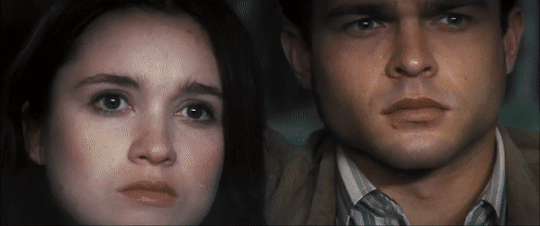



Alice Englert, Alden Ehrenreich, Rachel Brosnahan and Sam Gilroy. Beautiful Creatures (2013)
#alden ehrenreich#alice englert#rachel brosnahan#sam gilroy#beautiful creatures#babyjujubee#adoring alden ehrenreich#tumblr#gif#google
2 notes
·
View notes
Text

#ncis: hawai'i#ncis: hawai'i spoilers#ncis: hawaii spoilers#ncis hawai'i spoilers#ncis hawaii spoilers#spoilers#s02e10#e: deep fake#alden parker#sam hanna#jane tennant#jesse boone#promo shot
9 notes
·
View notes
Text

Hortense Alden, Sam Jaffe, and Sig Ruman in the original Broadway production of “Grand Hotel” (1930-1931)
12 notes
·
View notes